Recently I decided that our cookware and cooking utensils needed an upgrade because we ruined two of our ancient non-stick frying pans during our last camping trip. In the process of researching kitchenware, I discovered that knives, in particular, had some pretty sweet products available. Unsurprisingly, my collector's mentality kicked in and I started delving deeper into the world of Japanese kitchen knives.
For the past 8 years we've been using an el cheapo knife set that consisted of one 8" chef's knife and three slicers of assorted lengths (4", 6" 8"). I think we resharpened them once throughout their lives with a sharpener that my mother gave us. Part of the handle on one had even broken off. Suffice to say, we weren't particularly picky about our kitchen implements up to this point.
Taking advantage of two Bed, Bath and Beyond coupons that were available to us, my first acquisition was a Shun Classic 7" Hollow Ground Santoku. I figured, hey, all purpose knife, that pretty much fits our (or more specifically, Erin's) needs to a tee.
The Shun Classic, despite being Kai's intro line, is constructed quite well. At least to my amateur eyes. Way above the nameless brand we had before for sure. The thick, round, "D shape", Pakkawood handle feels great in my hand and the blade came out of the box impressively sharp. The Damascus look on the blade is subtle and attractive and the hollow ground indentations running along the length of the blade is supposed to minimize stickiness when slicing through food.
Now you can't just have a one knife kitchen arsenal. Well ok, some people probably can. But usually you want a little more variety. So after perusing the web and running through numerous mixes and matches in my head, I settled on a three-knife set. Besides the aforementioned santoku, I brought in a 6.5" nakiri and a 4" paring knife. Both also Shun Classics just to keep things consistent. The plan was to have the santoku as the primarily meat slicing but also do-pretty-much-everything knife with the nakiri for larger volume veggie work and the paring knife for fruits and other things that would work best with a smaller blade.
In actual use though, for awhile the first knife that Erin would constantly reach for was the 4" paring. Pretty much used it for everything: meat, veggies, fruits, you name it. She just felt more comfortable with the shorter overall length of the knife. After constant nagging from me to use the appropriate knife for the task, she's started to use the santoku as well. So the nakiri pretty much just sticks on the holder looking pretty unless I'm the one doing the food prep.
Of course, you didn't expect that to be the end did you? ;-) While doing my research, I had come across Korin, a store specializing in Japanese knives and tableware. Their site proved invaluable in explaining to this newbie what all the knife types were for as well as available brands. And luckily, they're located in NYC. So I decided to pay them a visit.
Going in, I knew that I wanted to pick up a 210mm gyutou, aka an 8" chef's knife, just for my own use. I figured it'd be too long for Erin to want to use on a daily basis. The question remaining was, which one? I had tentatively narrowed the list to five with one in particular that was leading the pack:
- Misono UX-10
- Masamoto VG10
- Masanobu VG10
- Togiharu Hammered Texture Damascus
- Ittosai Stain Resistant Layered Steel
But, as I was to find out, it's very important when knife shopping to get a hands on feel with the knife before making a decision. Like with camera shopping. The knife that I eventually left the store with, the Togiharu G-1, wasn't even on the original list. So what happened? I must have had the poor sales guy bring out almost every 210mm gyutou that they had, 8 in all, and compared how they felt in my hands.
My first choice going in was the Misono UX-10 as everything that I've read about it was exemplary. Unfortunately, the handle felt way too small and hard-edged for me. Light and very sharp but just not a comfortable knife to use in my hands. The Masanobu VG10, on the other hand, was HUGE with a long octogonal handle. Beautiful blade but quite pricey. I've read that some people like the octogonal grips, feeling that they're more secure but it just didn't do it for me. The Togiharu Hammered Texture Damascus was nice but I didn't like the hammered texture look as much as I thought I would. I don't remember much about the Ittosai Stain Resistant Layered Steel but I do remember Korin's resident knife master, Sugai-san, commenting to me that if given a choice, he'd go with the Masamoto VG10. But we'll come back to that later. The two remaining knives, a Suisin Special Inox and a Nenox G-Type were both quite excellent and stood apart from the rest because they both felt very handle heavy. While pretty much all of the other knives felt pretty balanced, it was instantly obvious once held that the Suisin and Nenox were different. Most likely because they both have metal caps at the butt end of the handle. I rather liked the heft of these two knives in the hand but ultimately decided against them as my first purchase because of the price. Either of the two are definitely on my short list of future purchases though.
So at the end it came down to two contenders: the Masamoto VG10 and the Togiharu G-1. The Togiharu I hadn't originally asked for but the sales guy brought it out with the Masamoto. And it was quickly apparent why. The two are pretty much the exact same knife. You put them side by side and you can't tell them apart. Held in the hand, no difference. Steel composition of the blade may be slightly different but in terms of metal hardness and use, no difference. Even though the Masamoto has a "composite wood" handle while the Togiharu has a bacteria-resistant "polyacetal resin" one, when in hand, no difference. The only discernable difference is the company name etched into the side of the blade. In this case, the Togiharu has a more eye-catching two-color etch while the Masamoto is a monotone grey-ish black. Masamoto however, has more of a history behind their name, having originated in 1872. Togiharu, while being "produced by a very highly respected knife maker in Japan, " is akin to a Korin house brand. I don't think they're available through any other store besides Korin. Even the price was similar, with less than $10 separating the two. So with all things being pretty much equal, I went with the Togiharu. Slightly cheaper plus I liked their name etching better. But really, you can't go wrong with either.
Oh, and of course, we couldn't exactly just throw these knives into the shelf when not in use so I mounted a 20" MIU France Magnetic Knife Holder to the wall. Strong magnets, attractive look, works just great. Mysteriously came with no mounting instructions but wasn't hard to figure out. Toughest part being I didn't have a drill bit large enough for the dry wall anchors so had to wing it a little.
So that's how we ended up with our current knife set. The Togiharu has proven to be a great slicer. 210mm (8") is on the short end for a chef's knife but we rarely butcher large pieces of meat plus our cutting board is tiny so it's the perfect size for us. Erin is, as far as I can tell, happy with the new Shuns although she's gotta be more careful now when cutting things in hand. Also discovered another very useful aspect about the Shun's fat D shaped handle. It's much more convenient when crushing garlic cloves. Can't do that with the Togiharu because its handle is comparatively thin and rectangular-ish. Erin almost gave me a heart attack when she started mashing the cloves with the face of the santoku blade but apparently that works quite well too. =p From everything I've read, it's better to be more careful about exerting too much force when doing something like that on a Japanese blade since they tend to be more brittle due to the thinness and hardness of the steel blade.
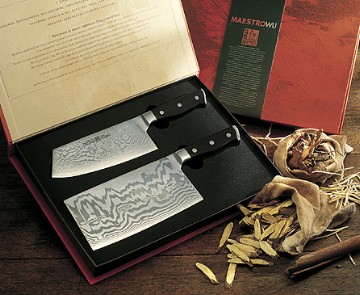
Eventually, I may wind up adding to the collection. Not because we need it, but because some of these knives are pretty damn cool. I did say that my collector's mentality kicked in, right? ;-p First on the list may be something from Maestro Wu, a Taiwan brand originating on the island of Kinmen. These guys have been basically collecting the artillery shells dropped onto the island from WWII and the 1950s Chinese bombardment and making knives out of them. Not much info on them that I could find in English but what I could find have been quite positive. Comparable to the better known Japanese brands. If purchased from US retailers, they're quite pricey (for the Damascus ones at least). So I'm trying to get a relative to bring some back for me. =)
I've also so far resisted the temptation of getting into learning how to sharpen these knives with Japanese water stones (also available, with instructional DVD as well from Korin). It's quite plausible that I may succumb eventually. =p In Korin's store, Sugai-san has a little alcove right where the knife section begins where you can watch him work his magic. He also gives free group lessons twice a week plus you can also schedule private, one-on-one lessons as well (not sure if there's a fee for this but probably so). When I was there he was giving one such lesson and from what I could tell, sharpening with the stones is one of those things that isn't too hard to get into but is hard to master. I figure for now, since I have relatively easy access to the store, I can just bring them in when they need sharpening. At $15/knife it's not too bad.

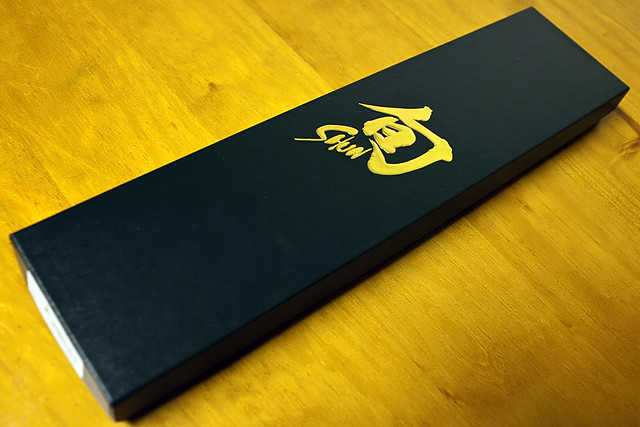
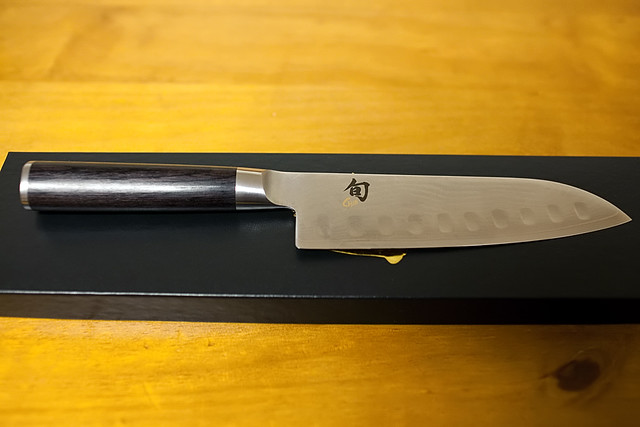
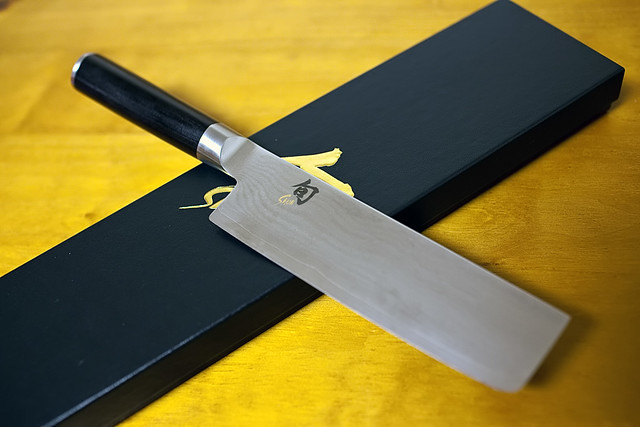
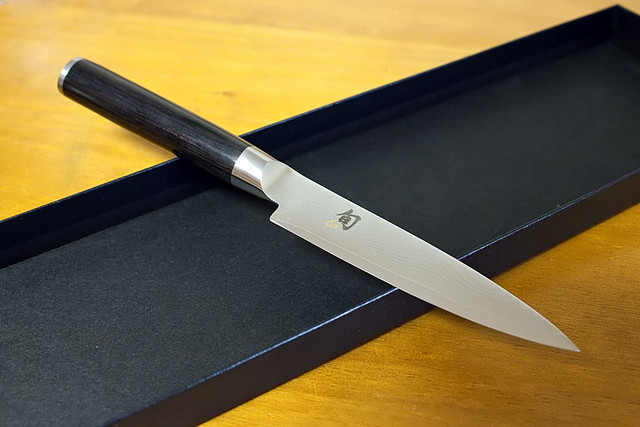
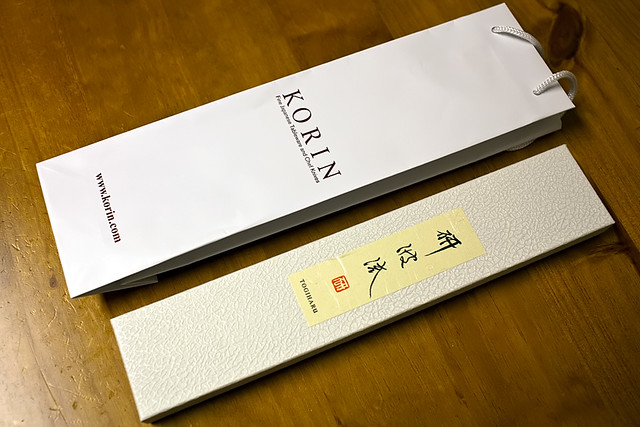

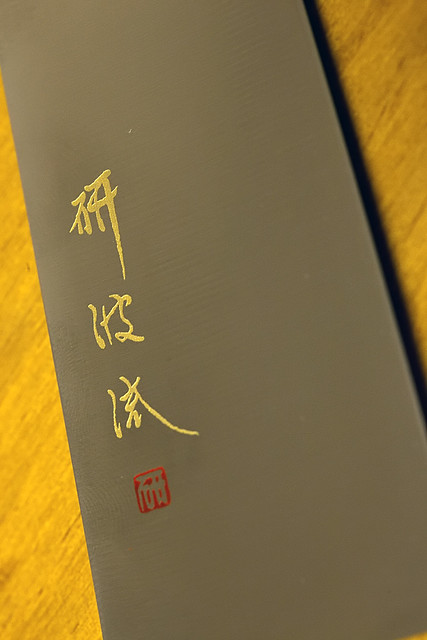
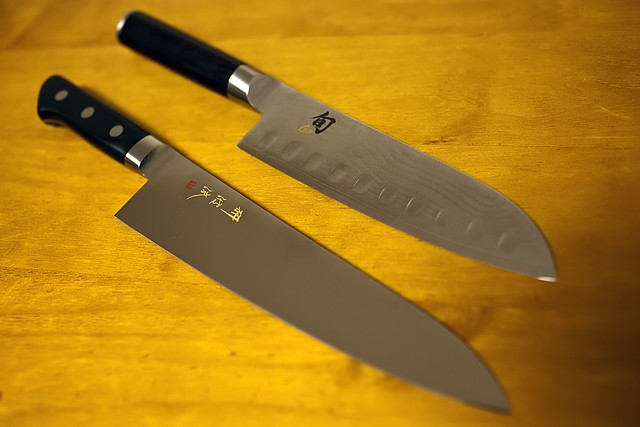
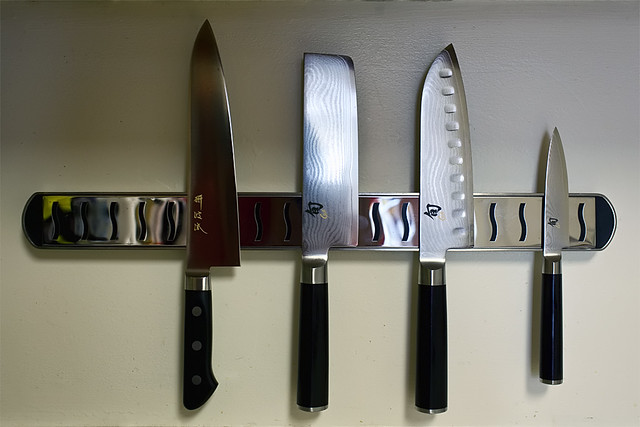
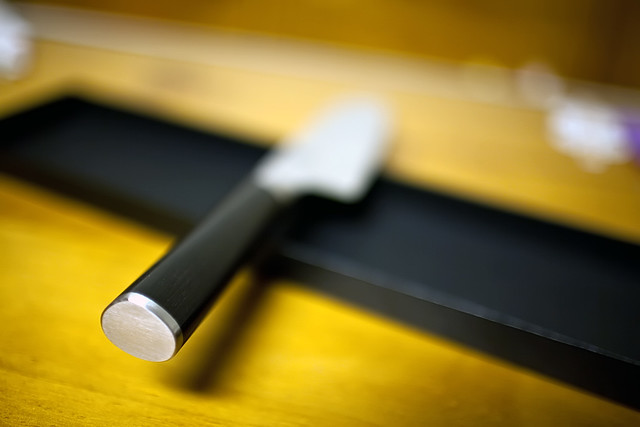


Comments (3)
$15 per knife for a good hand (i.e. not with a grinder) sharpening? Not bad, but my cheapskate side would make me get re-acquainted with my own sharpening stones =-)
Posted by Rob | July 30, 2010 9:41 PM
Posted on July 30, 2010 21:41
Yup, $15/knife for hand sharpening. $25 if it's a Japanese style knife. I figure if they only need to be sharpened every 6+ months, then it should be ok. But yeah, like I said, I may eventually wind up attempting to sharpen by myself. =)
Posted by Ben | July 30, 2010 11:44 PM
Posted on July 30, 2010 23:44
You don't have to worry about crushing garlic using the face of your Japanese knife, that's not going to be harmful to it. The hardness and brittleness come into play to avoid things like cutting frozen food/bones, or chucking it into the sink or drawer where it can bang against things and/or get damage to the edge or tip.
Posted by Richard | November 25, 2010 4:12 AM
Posted on November 25, 2010 04:12